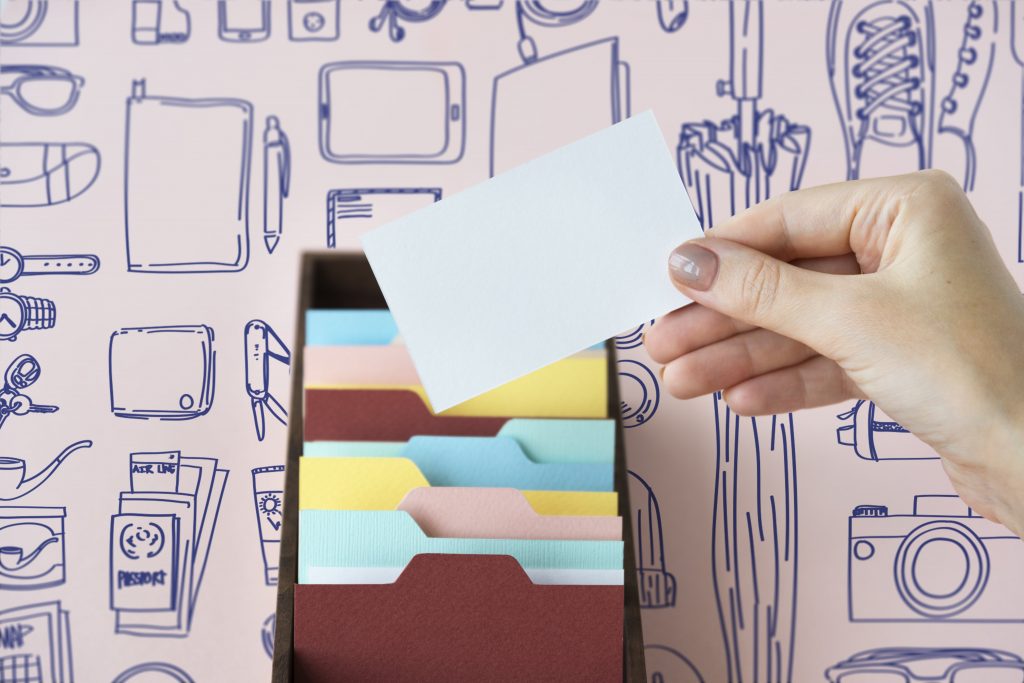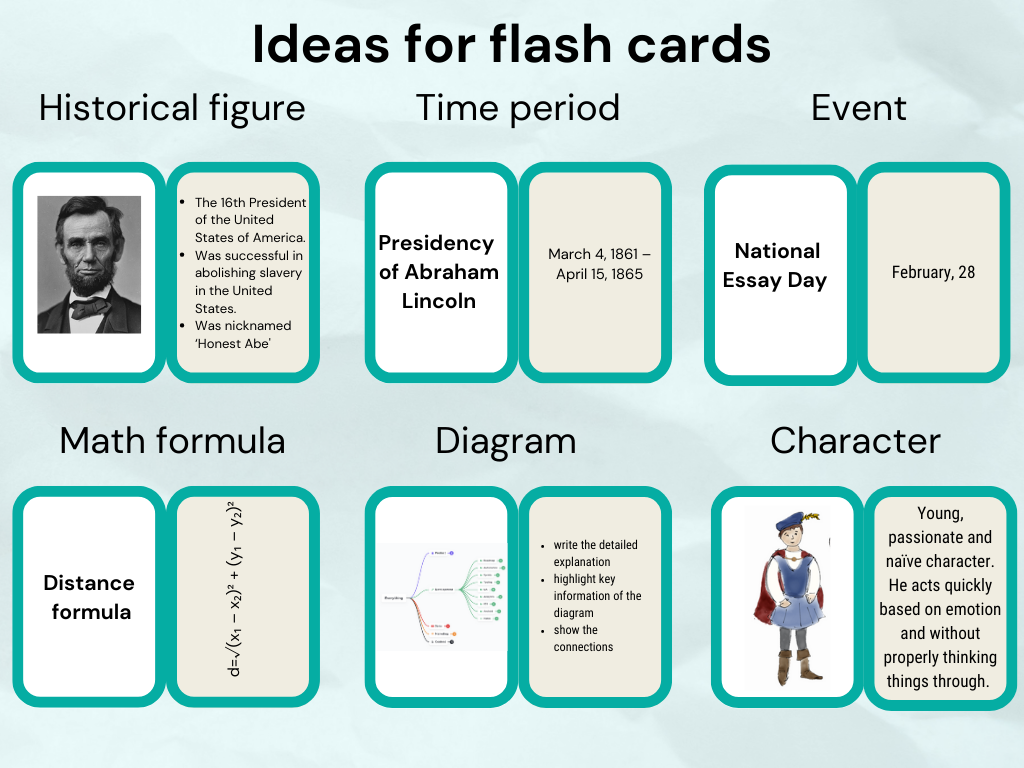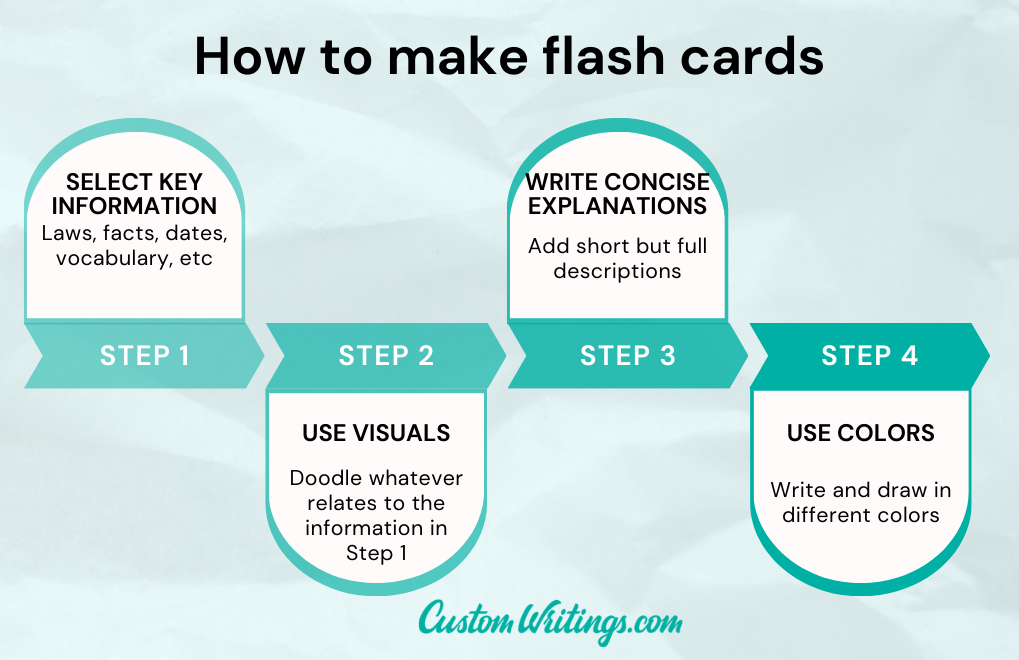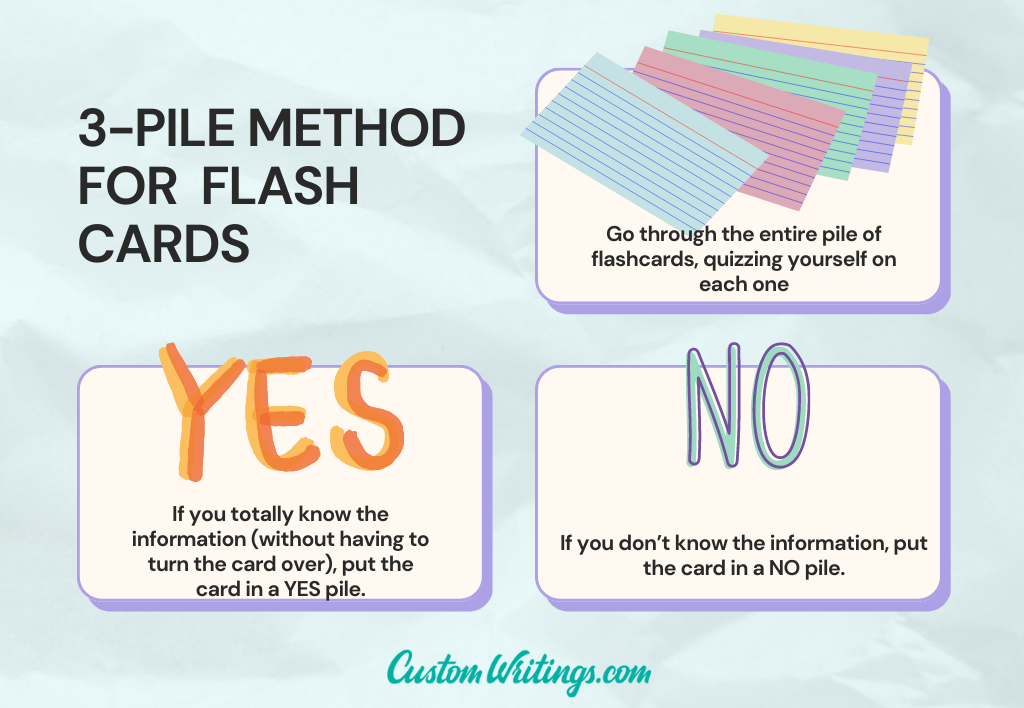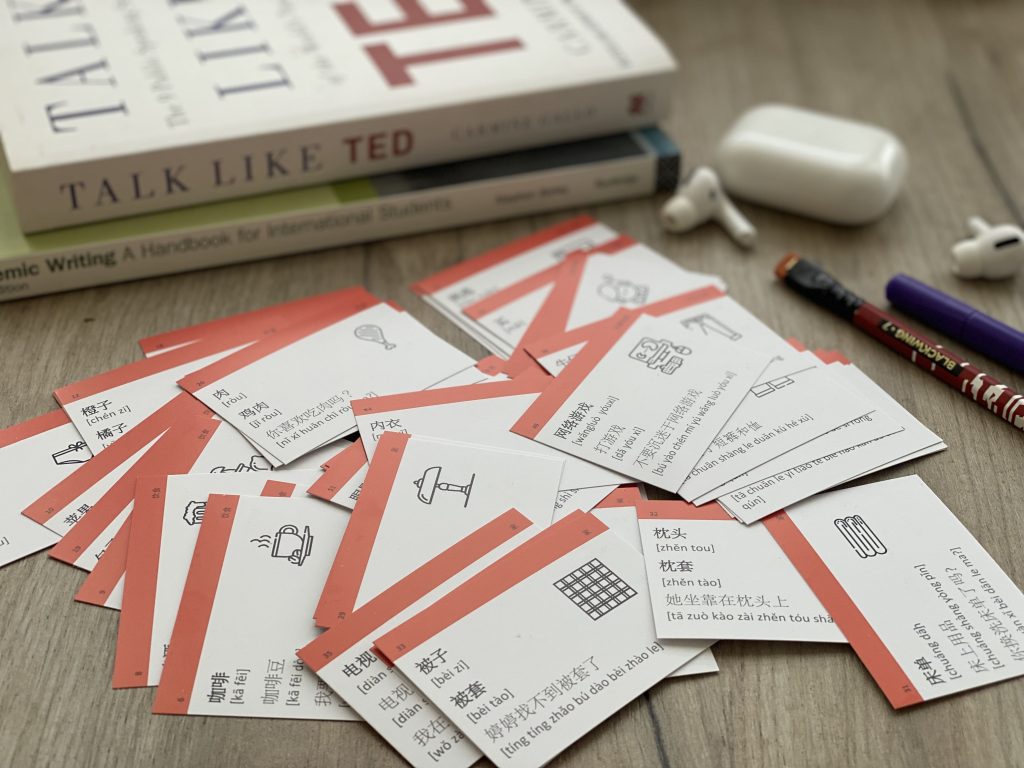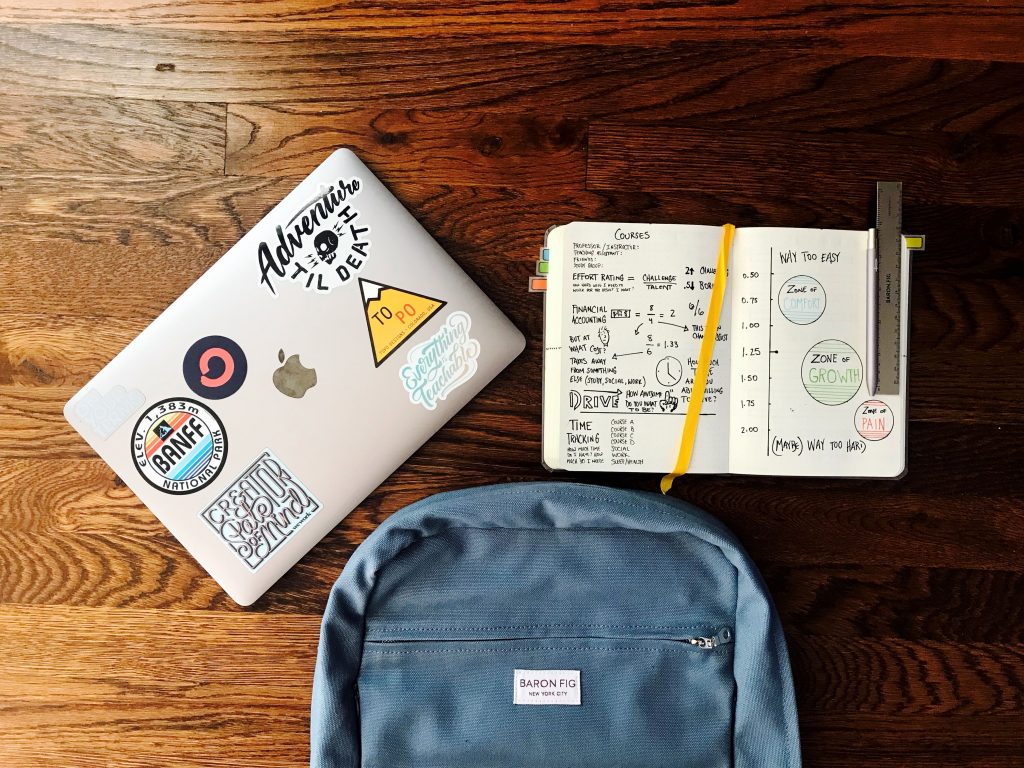Flashcards are a simple learning tool used to help people of all ages study and remember information. They are typically made from pieces of paper with questions or facts written on them, with answers printed on the reverse side.
Since the 1800s, paper flashcards have been utilized to aid in learning. The first recorded use of this tool was Reading Disentangled (1834) by Favell Lee Mortimer – a set of phonics flashcards. Since their inception, flashcards have become popular among students of all levels.
Flashcards can be used for a wide range of purposes, including:
- Learning foreign languages
- Memorizing mathematical equations
- Studying facts and concepts in history or science
- Understanding different grammar rules
- Memorizing vocabulary words
- Practicing pronunciation
- Revising for exams
In this article, we will explain how to use flashcards in college, from creating and using them effectively to making the most out of this powerful tool. With the right approach, you can use flashcards to maximize your academic success and make studying much more efficient!
What You’ll Learn in This Article about Flash Cards |
Flashcards for Studying: Benefits
Flashcards are widely used in studying and revision because they help people of all ages remember complex information.
Studies have found that flashcards can help improve the speed and accuracy of recall as well as enhance working memory and overall cognitive performance.
Here are some of the numerous benefits of using flashcards for studying:
- A more effective review method – Flashcards making provides an effective and efficient way for learners to retrace their steps and review material quickly. Students can significantly increase their understanding and recall rate by actively engaging with the material.
- Improved test performance – The regular use of study flashcards has been proven to help boost grades on tests by helping students to review more information within a shorter amount of time. It enables them to both optimize their study time and raise their test scores.
- Enhanced memory retention – Flashcards are designed around key facts or ideas, which helps users focus on relevant information while increasing the storage capacity in their short-term memory. Research also suggests that flash cards making accelerates learning by helping learners recognize patterns more easily. So, flashcard memory is a power!
- Increased motivation – The repetitive use of flashcards encourages repetition, an essential part of learning retention. It also helps create a sense of success and metacognition, which can significantly motivate people to keep going even when they feel discouraged or overwhelmed.
These are just some of the significant advantages that show why you should create flashcards for studying. By incorporating this tool into your learning routine, you can maximize your academic success!
Study Cards in College
College students commonly use flashcards to help them learn and remember important information for exams.
A survey found that the vast majority (87%) of flashcard users find them beneficial, and an even greater number (83%) would recommend them to someone else.
Aside from helping with test prep, college students can use flashcards study to their advantage in many other ways. For example, they can be used as an effective way to review lecture notes or understand complicated topics such as math equations and foreign language vocabulary.
Studies flashcards can also be used when studying for multiple classes simultaneously, allowing users to break down large chunks of material into manageable units and review each concept separately.
Flashcards can also aid in memorizing facts and figures during projects or presentations, making recalling relevant information on demand easier.
Lastly, using flashcards is an excellent way for users to organize their notes and quiz themselves on the concepts presented in textbooks or lectures.
How to Make Flashcards
Flashcards are an effective and convenient way to help students review and recall material. Here are some tips for creating effective flashcards:
- Select meaningful and relevant information to include: When studying, it’s important to focus on key concepts and facts rather than summarizing or putting multiple things on a single card.
- Use visuals when possible: Images can be used as an effective way to help simplify and visualize complex content, which can be helpful when memorizing new information.
- Make them concise: Strive to keep the cards as concise as possible to help ensure that the entire topic can be understood without overwhelming the user. The concise making of flashcards is an effective way to improve one’s retention of a subject matter.
- Take advantage of color: Incorporating colors can help set different topics apart on multiple cards and separate critical information (like definitions) from examples for better comprehension.
Here are some video tutorials from YouTube about making flashcards:
- “How to Make Flashcards” by Cajun Koi Academy is a comprehensive tutorial that covers everything from choosing the right materials to the point you make your own flashcards. It also offers tips on how to use them effectively.
- “How To Make Flash Cards” by ZOË KEZIA provides an easy-to-follow guide for making your own flash cards. It covers essential topics such as choosing the right paper and using an efficient layout. The guide also includes helpful tips on how to effectively use your cards for maximum learning.
- “How To Make Flash Cards” by Howcast. With this comprehensive and intuitive step-by-step tutorial, you’ll be easily guided through selecting the appropriate materials to craft your own flashcards, as well as receiving helpful instructions on how best to make use of them. Whether you’re a beginner or an experienced user, this guide has something for everyone!
These video tutorials are great resources for anyone looking to start their making of flashcards quickly and easily. With these videos, you can create effective and efficient study tools in no time!
How to Create Flashcards Online
Making flashcards online is a great way to learn and memorize material quickly and efficiently. The principles are similar to those of cards created offline, but with the added convenience of being able to access them from anywhere.
Here’s a concise guide on how to create online flashcards in just five steps:
- Select a platform: Consider popular options like Quizlet, Anki, Cram, or Brainscape to find one that fits your needs and allows you to easily make flashcards online.
- Register for an account: Sign up using your email or a social media account, if available.
- Create a new set: Once logged in, start a new set of flashcards with a relevant title and an optional description.
- Add and customize cards: Input terms/questions and definitions/answers, incorporating images or audio if desired.
- Save, study, and share: Save your flashcards, explore various study modes, and share them with others if you wish.
These general steps should help you make online flashcards with ease, making your study sessions more effective and enjoyable.
And if you need some apps to make your life easier, here are some of the best ones for making flash cards online:
- Quizlet provides a comprehensive platform where you can make free flashcards with various options, including audio and images. It also offers a large library of pre-made study sets created by other users.
- Cram is an online learning tool that focuses on helping students create their own flashcards with options like audio and images. This flash cards website also includes a library of pre-made study sets from other users for easily making any type of flashcard online.
- StudyBlue provides a comprehensive platform for creating your own customized flash card sets with features like audio and image support. It also has a large library of pre-made study sets from other users and its own AI-based adaptive learning system.
All these tools and apps allow you to make a flashcard and get the most out of your studying!
The Right Way to Study Flash Cards
Using flashcards is a great way for students to learn and remember material quickly and effectively. Here are some tips for getting the most out of your flashcards:
- Test yourself frequently – Frequently testing yourself with practice quizzes or by participating in discussion forums will help reinforce what you have learned from creating the cards and keep the material fresh in your mind for a longer period of time.
- Keep up with your progress – Tracking your progress can indicate which topics you know well, which ones need more work, and what you should focus your further study on.
- Incorporate multimedia elements – Adding images, audio, video, or other multimedia will help add more context to your flashcards and make them more engaging. Also, consider using social media platforms like Instagram, Twitter, or Facebook to make your flashcards interactive.
- Take regular breaks – It’s important to give yourself sufficient breaks throughout the learning process so that you don’t become overwhelmed or discouraged by the amount of information you’re trying to memorize.
By following these rules and principles, students can maximize their results when learning flash cards!
Flashcard Vocabulary
Flashcards are a great way to practice and improve your language skills. Here are some tips for effectively using flashcards when studying a foreign language:
- Focus on useful words – Choose only the most important words, phrases, and expressions that will be useful to you in conversation.
- Use images – Images can provide another way of associating words with their meanings, which will help you remember them better.
- Write down notes – Note cards for studying can help you organize information and ensure retention by reinforcing key concepts or phrases from different topics.
- Use multimedia elements – Consider incorporating audio or video recordings alongside the words to get accustomed to cultural nuances or variations in regional pronunciation.
- Read aloud – It’s important to familiarize yourself with how a word should sound by reading it aloud multiple times. It also increases fluency as you become more comfortable speaking a foreign language.
Using these techniques, students can maximize their results when working with flashcards to learn a new language! Make your own flashcards and enjoy studying! And if you’re working on written assignments too, don’t forget to learn how to cite a term paper properly to maintain academic integrity and avoid plagiarism.
